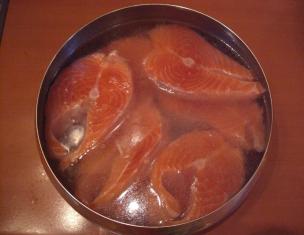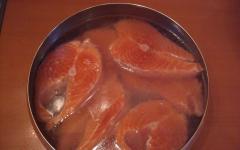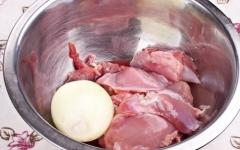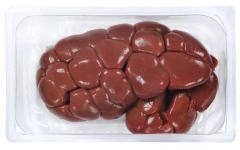A person behind bars has few ways to express and defend his position. The most extreme of them is a hunger strike. By refusing food, the prisoner demonstrates that he is ready to sacrifice his life and health for the sake of his truth and his honor.
Hunger strikes by Soviet-era dissidents became a challenge to the Soviet system and a way to show the world that they did not give up their beliefs in prison or camp. In the seventies, this was the only way for a powerless political prisoner to prevent his dignity from being trampled upon. Naturally, this negatively affected their health. Suffice it to recall the tragic fate of the brilliant poet Vasil Stus, who died on September 4, 1985 during a dry hunger strike in a Mordovian camp.
In independent Ukraine, the authorities began to treat starving prisoners “more carefully”. A special instruction was issued according to which they can even be force-fed if their health condition becomes dangerous.
It would seem that force feeding is a way to preserve life and health. But that's not true. Not only does force-feeding deprive the prisoner of the opportunity to defend his rights and honor through hunger. According to doctors, the very fact of force-feeding a person who has entered the so-called “stationary phase” of hunger is extremely harmful to the body and only intensifies the severe pangs of hunger. In addition, the procedure itself, in which handcuffs, a mouth speculator, a watering can and “the required number of junior inspectors” are used, is mocking. In force feeding, liquid food is fed through a feeding tube that is inserted into the prisoner's stomach through the mouth or, preferably, the nose. What kind of injuries this procedure can result in is written there in the instructions. According to doctors, regular “feeding” in this way will inevitably end in failure.
The European Court of Human Rights back in 2005 (the case “Nevmerzhitsky v. Ukraine”) recognized the practice of such forced feeding as a type of torture. Eight years have passed, but the same instruction on force feeding, contrary to the requirements of international conventions and Ukrainian legislation, still remains in force.
When Yuriy Lutsenko was on hunger strike. Fortunately, the hunger strike of the former minister could not be compared with the dry hunger strike of Stus. But if Yuri Vitalievich had not washed down his paska with sweet tea, but had actually been starving, then he would have had every chance of experiencing the effects of a mouth opener, a probe, and junior inspectors with a watering can.
So far, only one Ukrainian “major league” politician, Arseniy Yatsenyuk, has become concerned about the conditions of detention in a pre-trial detention center before he himself became a prisoner. Igor Markov, as a people's deputy, had the opportunity, at a minimum, with his requests to speed up the process of humanizing the conditions of detention of prisoners and the abolition of sadistic instructions. Unfortunately, this did not happen, and I hope the current situation serves as a lesson for his colleagues. After all, as you know, one cannot swear off prison and pocket money...
ENSURING SAFETY WHEN ORGANIZING FORCE FEEDING OF PEOPLE REFUSING TO EAT FOOD IN A CORRECTIONAL INSTITUTION
Sorokin Mikhail Vladimirovich 1, Sorokina Olga Evgenievna 2
1 Vladimir Law Institute of the Federal Penitentiary Service of Russia, senior lecturer at the Department of Regime Organization and Supervision of the VYuI FSIN of Russia
2 Vladimirsky State University them. A.G. and N.G. Stoletov Institute of Law, assistant at the Department of Theory and History of State and Law
annotation
The article, based on an analysis of the norms of penal legislation, decisions of the European Court of Human Rights and historical sources, examines the issue of the procedure for organizing forced feeding of people who refuse to eat, and also develops an algorithm for the actions of the administration aimed at ensuring the personal safety of medical personnel.
SECURITY AT THE ORGANIZATION OF THE FORCE-FEEDING OF PERSONS REFUSING TO TAKE FOOD IN PRISON
Sorokin Mikhail Vladimirovich 1 , Sorokina Olga Evgenievna 2
1 Vladimir law instityte of the FPS of Russia, senior lecturer of the chair of regime and supervision of VLI of the FPS of Russia
2 Vladimir state university, assistant of the chair theory and history of state and law
Abstract
The article based on the analysis of criminal - executive legislation, decisions of the European Court of Human Rights, and historical sources considered order of organizing the force-feeding of persons refusing to take food, as well as the algorithm of actions of the administration, aimed at ensuring the personal safety of the medical staff.
Bibliographic link to the article:
Sorokin M.V., Sorokina O.E. Ensuring safety during the organization of forced feeding of persons who refuse to eat in a correctional institution // Politics, state and law. 2015. No. 11 [Electronic resource]..02.2019).
Based on Part 4 of Art. 101 of the Criminal Executive Code Russian Federation(hereinafter: Penal Code of the Russian Federation) in cases where a convicted person refuses to eat and there is a threat to his life, forced feeding of the convicted person for medical reasons is allowed.
In accordance with Art. 42 of the Federal Law of July 15, 1995
No. 103-FZ “On the detention of suspects and accused of committing crimes” (hereinafter: Federal Law) established an algorithm for the actions of the administration of a pre-trial detention center (hereinafter: pre-trial detention center), a premises operating as a pre-trial detention center.
The procedure we are considering is inherently forced and invasive, i.e. may lead to negative consequences if individuals lack professional competencies necessary for its implementation. In addition, the life and health of persons held in penitentiary institutions directly depends on its implementation.
The aspect under consideration in the activities of penitentiary institutions is reflected in the decisions of the European Court of Human Rights. Thus, in 2000, Swiss citizen Rappaz was sentenced to five years and eight months in prison for various crimes. On the day he began serving his sentence in March 2010, he went on a hunger strike to demand the legalization of cannabis use and to protest his sentence, which he considered overly harsh. Citing health reasons, the applicant requested release. On August 26, 2010, the Federal Court rejected his appeal, finding force-feeding an acceptable alternative to release. In December 2010 the applicant ended his hunger strike without being force-fed. In the case at hand, the ECtHR decided that when a prisoner goes on hunger strike, the potential consequences for his health do not give rise to a violation of the Convention for the Protection of Human Rights and Fundamental Freedoms, if the national authorities have properly considered the situation and taken the necessary measures. This is particularly applicable in circumstances where the person concerned continues to refuse food and water despite deteriorating health. In the present case, the administrative and judicial authorities immediately assessed the threat that the hunger strike posed to the applicant's health and even his life and took the measures considered necessary to eliminate it.
It should be noted that in the Soviet period of history, the procedure and conditions of detention in places of deprivation of liberty of persons who refuse to eat food and the procedure for their forced feeding were regulated
a whole block of departmental legislation.
In accordance with the correctional labor legislation of the RSFSR, the administration of correctional labor institutions and places of detention was ordered to identify instigators and organizers of refusals to eat food, since they were equated with disruptors of the activities of penitentiary institutions.
Our analysis of modern penal legislation of the Russian Federation allows us to state that, in addition to the provisions enshrined in the Penal Code of the Russian Federation and the Federal Law, this aspect of the activities of the administration of correctional institutions has not found its detail and legislative regulation.
In connection with the above, there has long been a need for a scientific study of the algorithm of actions of the administration of places of detention and serving sentences in the event of a hunger strike by suspects, accused and convicts.
The head of the correctional institution or his deputy, after receiving information from the duty assistant to the head of the colony (duty assistant to the head of the pre-trial detention center, duty assistant to the head of the prison) about the establishment of the fact of refusal of food by the convict, is obliged to conduct a personal conversation within 24 hours in order to find out the specific reasons behind the basis for not accepting food and report the incident to the head of the territorial authority; the authorized prosecutor to oversee compliance with the law in places of deprivation of liberty; person or body that has custody of the suspect, accused, or person in custody.
If the reasons that served as the basis for refusing to eat are recognized as justified and legal, it is necessary to urgently take all possible measures to satisfy the legal requirements put forward by the convicted person.
If a person makes unreasonable demands, it is necessary to point out in a personal conversation the illegality of the actions and involve the employees of the medical part of the correctional institution and employees of the psychological service in explanatory work in order to provide qualified assistance and explanatory work about the harmfulness and harm that one can cause to one’s health through one’s actions.
During the conversation, the convicted person must be asked to submit a written statement on the fact of declaring a hunger strike, in which he must indicate the reasons that served as the basis for refusing to eat.
Within 24 hours after actually refusing to eat, the convict, by order of the head of the correctional facility or his deputy, is transferred to solitary confinement and his behavior is closely monitored by the duty shift staff, as well as with the help of engineering and technical means of supervision (video surveillance systems).
The convicted person, for the purpose of isolation, is transferred to an isolated room of a punishment cell, a cell-type room, or a single cell-type room; the person is in custody and is transferred to a punishment cell; sentenced to life imprisonment in solitary confinement. After a person is placed in a cell, an employee of the security department (regime) creates a food delivery record card for him.
During the first three days after declaring a hunger strike, the convicted person must be subjected to a medical examination in order to establish his mental and general somatic condition. Conclusions about the state of health must be entered into the outpatient card.
The release of a person who refuses to eat food from work and perform other duties provided for by the penal legislation is carried out only on medical grounds, upon the written instructions of the supervising doctor or the head of the medical unit of the correctional institution.
Necessary outpatient treatment and emergency medical care in case of complications of a health condition are provided in the premises in which the convicted person is kept.
A convict transferred to solitary confinement, upon refusal to eat, in accordance with the daily routine of the correctional institution, is given food on a general basis according to the norms enshrined in the order of the Ministry of Justice of Russia dated August 2, 2005 No. 125. If the refusal to eat continues, the food is removed after two hours and each fact is recorded in the food delivery record card. In this case, the fact of provision of food must be recorded on a wearable video recorder.
The transfer of a convicted person to forced feeding is carried out based on the conclusion of the supervising doctor, based on a written decision of the head of the correctional facility, with mandatory notification to the prosecutor for supervision of compliance with the law in places of deprivation of liberty.
The beginning of forced feeding and the frequency of this procedure is determined by the supervising doctor, taking into account the somatic condition of the convicted person.
The preparation of the nutritional mixture is carried out according to the diet compiled by an employee of the medical unit, according to the standards provided for in Appendix No. 7 to Order No. 125 of the Ministry of Justice of Russia dated August 2, 2005.
The force-feeding procedure is carried out only by employees of the medical unit of the correctional institution under the supervision of employees of the duty shift of the security department (regime) in the presence of the DPNK (DPNT, DPNSI).
Before the start of forced feeding, the convict is explained about the onset of life-threatening consequences and the need to eat.
If a convict provides physical resistance to an employee of the medical unit of the correctional facility who is starting to force-feed, handcuffs are used against him, in the form of restraints. At the same time, employees must ensure not only the personal safety of medical personnel, but also take measures to keep the convicted person in the position necessary for the procedure.
For the purpose of force feeding, a probe with a funnel is used. Before starting the procedure, the instrument used is subjected to boiling and mandatory cooling to a comfortable temperature. When carrying out force feeding, in order to prevent the probe from being bitten off, as well as causing injury to the employee, a mouth retractor must be inserted into the open mouth of the convict.
The inserted probe should be moist to minimize discomfort and ensure gliding when inserted into the body. The health care professional must ensure that the probe does not enter the trachea. After inserting the probe, it is necessary to require the convicted person to say a few words or make sounds. The ability of a person to breathe and speak freely will indicate that the probe has been correctly inserted into the human body.
Having made sure of this, the medical unit employee must first pour into the funnel not a large number of boiled water and only after that begin to introduce the prepared nutritional mixture into the human body.
For each fact of carrying out the procedure of forced feeding of a convicted person, an entry is made about it in the medical record indicating the date, time, composition of the nutritional mixture, which is confirmed by a signature indicating the positions occupied by the employees present during the procedure.
To avoid accidents during forced feeding (damage to the jaw or teeth, insertion of a probe instead of the esophagus into the trachea, reflex cessation of breathing or cardiac activity during insertion of the probe, suffocation with dentures, etc.), the doctor or paramedic must have the necessary professional skills required for this procedure, as well as be able to carry out resuscitation measures and have the necessary medical supplies and means for providing emergency medical care.
If the health of the convict in respect of whom the force-feeding procedure was applied improves and there is no further threat to his life and health, the specified procedure is terminated, which is recorded in the medical record.
The developed procedure will make it possible to carry out force-feeding of suspects, accused and convicted persons on a legal basis in compliance with human rights, as well as to control the actions of the administration of the correctional institution by the prosecutor's office to supervise the observance of the rule of law in the correctional institution.
There are a variety of force feeding methods available to the practitioner, ranging from oral force feeding to numerous enteral feeding methods.
Food can be introduced through:
- naso-esophageal tube
- pharyngeal tube
- esophageal tube
- gastrostomy tube placed using special devices, including the method of percutaneous endoscopically controlled gastrostomy (PEG)
- jejunostomy tube
Each method uses many different probes or tubes to force feed. Each route of food administration has its own advantages and disadvantages.
The route of food administration for a particular patient is selected taking into account the possibility of filling the intestines in accordance with its function. In other words, if a patient has been diagnosed with megaesophagus and requires placement of a tube for artificial feeding, then a gastrostomy feeding tube should be placed, for example, by performing a PEG, whereas in severe cases of gingivitis or stomatitis, when the patient is unable (or unwilling) to eat , it is appropriate to use an esophagostomy tube. The second rule of thumb is that you can choose the method of forced feeding that best suits your individual situation by answering the following questions:
- Are you planning to leave the feeding tube in for a long time?
- Is there a risk associated with anesthesia that could cause harm to health when inserting a tube/tube?
- What type of diet does the patient require? (Some food will not pass through small-bore tubes, such as nasoesophageal or jejunostomy tubes.)
Finally, it is extremely important to discuss the decision with the patient's relatives, as they must agree to provide adequate feeding when the patient can be taken home. Many relatives can feed the patient 4 times a day, which is usually required when installing esophagostomy tubes or placing a gastrostomy tube using the PEG method. However, in patients with jejunostomy tubes, bolus feedings three to four times a day are likely to result in diarrhea due to volume and osmotic overload of the small intestine. Therefore, when feeding through a jejunostomy tube, very frequent (every 2-3 hours) or continuous administration of the nutritional mixture in small portions using an infusion pump (automatic pump syringe for infusion) is required, which cannot be provided at home. Thus, when choosing the best way forced feeding must take into account not only the needs of the patient, but also the capabilities of those who will directly care for the patient.
Forced feeding plan
Once the feed route has been determined, a feeding plan should be developed. There are several considerations in developing such a plan, the first of which is to determine how many calories the patient needs in his individual situation. The second is the choice of food for forced feeding (based on the type of tube/tube, the availability of the required food on the market and the individual needs of the patient) and, finally, the duration of artificial feeding, the frequency and volume of food to be administered should be taken into account.
The required number of calories during forced feeding for each patient can be calculated using various equations. But in general, for critically ill patients who have been unable to consume food or who have disorders that impede the absorption of food, the main goal is to achieve caloric intake that covers the patient's resting energy requirement (RER). For most patients, RER is all they need, even if the patient is under severe metabolic stress. Patients with severe metabolic disorders (eg, burns) may require additional calories (1.25-1.5 x RER), but in most cases, providing RER is more than sufficient to support bowel function, the immune system, and basic protein and energy needs. exchanges. The simplest equation used in clinical practice is the linear equation:
RER = 30 x BW (kg) + 70.
Many nutrition experts use the following equation, which is most accurate for calculating RER in very small or very large patients:
RER = 70 x MT 075 (kg).
After calculating the patient's RER, the next step is to select the dietary feed that is best suited to correct the disease (eg, high-digestibility or high-energy/restorative diet; hypoallergenic foods or diet with hydrolyzed components).
After determining the required calorie content and choosing a diet, the final step is to determine the best consistency of the nutritional mixture for forced feeding of the patient. Most canned foods can be administered through a Charrière 10 or larger enteral feeding tube after first blending them into a slurry or slurry. Smaller tubes, especially nasoesophageal tubes and jejunostomy tubes (usually Charrière size 5 or smaller), require a liquid form of formula because blended or mashed food will be difficult to pass through the tube. The most common liquid formula (Clinicare (Abbott Labs) in the US and Reanimyl (Virbac) in the UK) is a balanced, high-calorie, moderate-fat, high-carbohydrate formula suitable for people with normal gastrointestinal function. However, for patients with serious gastrointestinal diseases, fat intolerance or a need for foods low in carbohydrates, such a diet may not be suitable. In medicine, there is a wide range of products offered for enteral nutrition of sick people and containing fats, proteins and carbohydrates in varying concentrations, which can also be used for short-term forced feeding. Unfortunately, this forced feeding does not meet protein needs and contains insufficient amounts of amino acids (eg, taurine, arginine and carnitine) and other nutrients (eg, arachidonic acid, some B vitamins) needed by these patients and therefore does not can be used to feed them without compensating for the lack of these substances.
Once the amount and type of food have been determined, an effective plan for its administration must be developed to minimize the likelihood of causing vomiting and other complications. For most patients, frequent force feeding in small portions is more appropriate than large bolus feedings because the stomach is not capable of rapid distension. On the first day, the person is fed 4-6 times, introducing half the calculated amount of food through the tube/tube that provides RER. If this amount is tolerated by the patient without complications, then the next day the volume of food is increased by a quarter, and so on. Some patients with gastrointestinal diseases are not able to accept the amount of food that satisfies the RER; however, even if the patient can consume a volume of formula that is 50% equivalent to the RER, this reduces the risk of intestinal bacterial translocation, immunodeficiency due to protein deficiency, and death due to sepsis.
The article was prepared and edited by: surgeonThere are times when a turtle is unable to obtain food for itself. In all other cases, she does not need such feeding. Basically, force feeding a turtle is necessary in cases where it cannot see. For example, her eyes are swollen with mucus, and she simply cannot see where she needs to move. As a rule, this is a painful condition that requires regular nutrition.
If the turtle does not eat, then perhaps it simply does not have an appetite, especially if it is not sick. There are times when a turtle does not eat or drink for several months. In addition, the turtle can hibernate. Sometimes the turtle hibernates for up to 4 months.

A similar method is used when a pet either cannot move (in case of injury) or cannot see. How does feeding happen? In this case, they simply bring food to the turtle, and it immediately reacts if it wants to eat. You can give fruits (apples, pears, etc.), vegetables (zucchini, cucumbers, etc.), as well as berries (strawberries, raspberries, etc.) from your hands.

If you feed your pet with a syringe, you will have to fix its head. Basically, liquid food is given from a syringe. She is given carrot juice, which has a thick consistency. You can add vitamin preparations, calcium compounds and other minerals to it.
The feeding technology is as follows: first you need to fix the head and open the mouth, after which the contents of the syringe should be squeezed onto the tongue. It is better not to feed food beyond the tongue, as the turtle may choke or choke.
As a rule, a 5 cc (5 ml) syringe is selected for feeding babies, and a 10 cc (10 ml) syringe is needed for feeding larger individuals.

The probe is used to introduce medications, such as children's "Espumisan", to combat problems gastrointestinal tract(Gastrointestinal tract). The tube consists of a soft tube that is directed directly into the stomach. An IV connection or a catheter will be suitable for the tube.
This method of administering medications eliminates the influence of unpleasant tastes for the turtle, and because of which the turtle will refuse to take them, for example, through a syringe.
To insert the tube into the turtle's stomach, it must be positioned vertically, head up. After this, you need to open the turtle’s mouth and insert the tube into the stomach.
The subtleties of force feeding
To implement this procedure, you need to practice fixing your pet’s head and opening its mouth.
Head fixation
The head is taken with two fingers, the index finger and the thumb. The complexity of the procedure lies in the fact that the turtle is constantly trying to hide its head in its shell. If the head is hidden along with all the limbs, then it is unlikely that it will be possible to get it out of there until she sticks it out herself.
As a rule, they capture the turtle's head by cunning. To do this, you will have to try to grab the turtle's paw, after which it will try to bite its offender. Precisely, at this moment you should contrive and grab the turtle’s head with your other hand.
Opening the mouth

The next stage of the procedure is to force the animal to open its mouth. At the same time, it should be remembered that there is no need to make significant efforts, as you can harm it. To make the turtle open its mouth, you need to take thick, plain paper. For example, a strip from a magazine that uses high-quality paper. This is a rather delicate operation that requires skill. You need to put a strip of paper in the turtle's mouth, between its jaws and press down, try to open its mouth. As a rule, after such non-rude actions, the turtle always opens its mouth. After this, they begin to force-feed the turtle.
Conclusion
To avoid having to resort to such measures, it is necessary to strictly observe feeding regimes, diet and sanitation conditions. Then your pet will always feel healthy and cheerful. This means that you won’t have to force-feed him and won’t have to learn skills that no one needs.
Force feeding- a forced procedure of introducing food into the body, which is now used primarily for fattening geese and ducks, but has also been and is being applied to people, representing the practice of feeding against their will. Forced feeding is carried out using special tubes. Gavage), which are inserted through the nose or mouth into the esophagus. Such nutrition can also be provided for medical reasons, and not just because a person deliberately refuses to eat. In some cases, forced feeding is possible due to mental disorders, when the patient refuses to eat due to the belief that the food is poisonous.
Force feeding in prisons
The practice was widely used in prisons during prisoner hunger strikes, but the World Health Organization's 1975 Tokyo Declaration prohibited force-feeding prisoners under certain conditions. According to this declaration, if a prisoner refuses to eat, feeding can be stopped, but only if at least two independent doctors confirm that the prisoner can reasonably and calmly consider the consequences of his refusal to eat, which doctors are obliged to explain to him.
Great Britain
USA
In the decision in the case " Lantz vs. Coleman“In 2009, a court in the state of Connecticut, USA, found that state prison system employee Teresa Lantz lawfully allowed the force-feeding of prisoner William Coleman (a British citizen convicted in the United States of rape).
UN
European Court of Human Rights
Russia
Force feeding of girls in Africa
In some regions of Africa and the Middle East, plus size women are considered more elegant, beautiful and sensual. Thus, in these countries, a special diet leading to obesity is common, applied to girls with early age. Mothers force girls to consume large amounts of food so that they gain a lot of weight before marriage. Tubes are also used for force feeding. Today this practice is most common in









